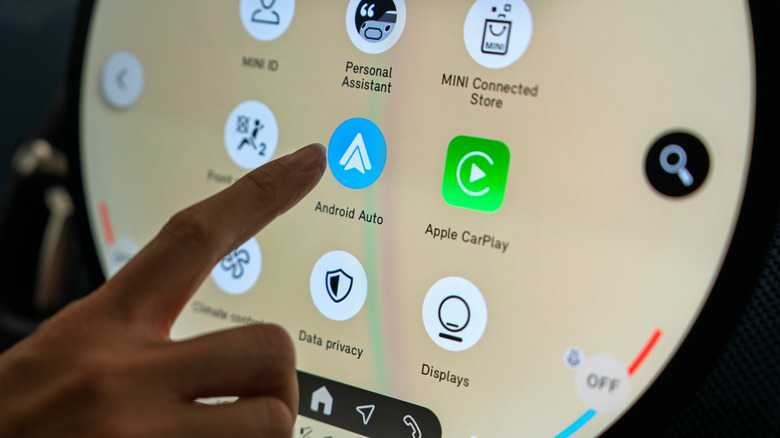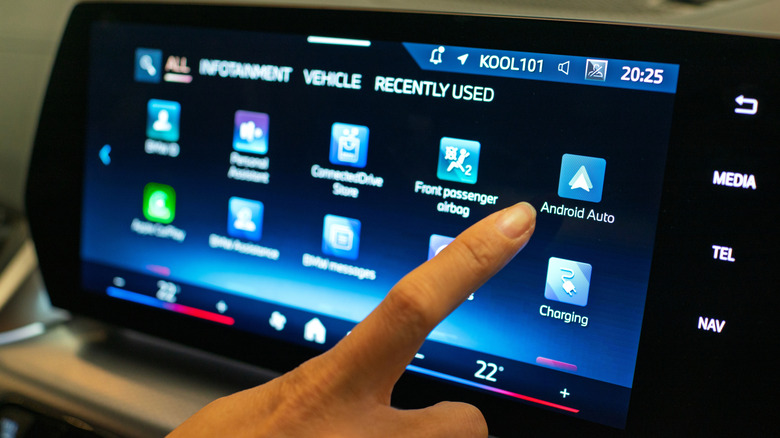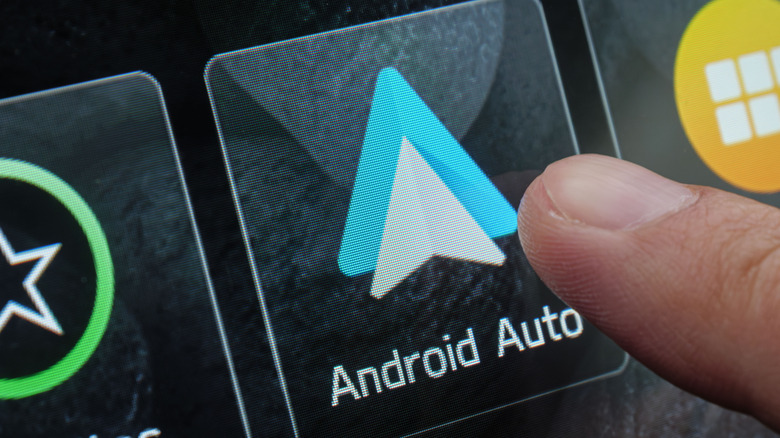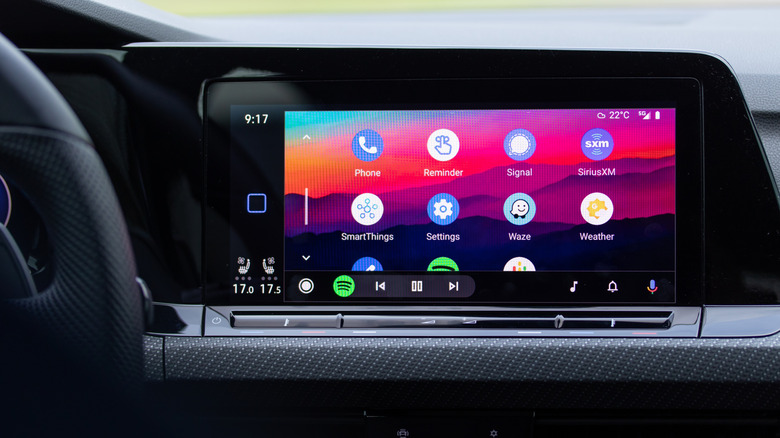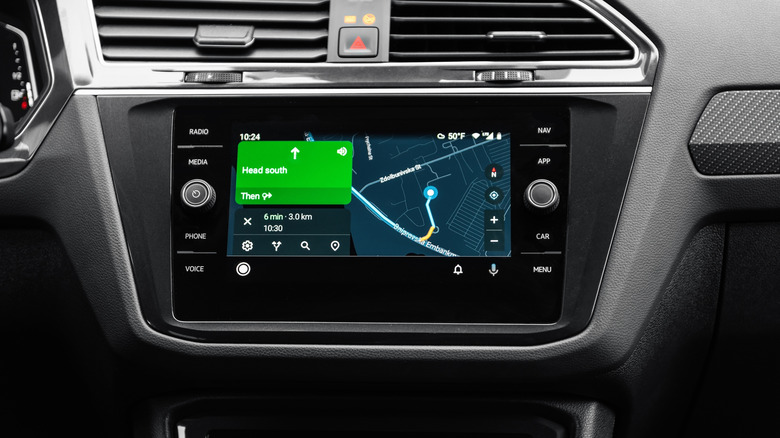4 Features Android Auto Does Better Than Apple CarPlay
Apple CarPlay and Android Auto have both redefined what in-car tech is capable of. What used to be a sluggish, confusing dashboard experience has now become an intuitive extension of your smartphone. While both platforms aim to make driving safer and smarter, Android Auto gives drivers a little more freedom to tweak, personalize, and push their infotainment setup further.
Apple's CarPlay embodies the Apple brand and provides clean visuals, a locked-down ecosystem, and minimal distractions. CarPlay is undeniably an Apple product: It's polished, predictable, and designed to "just work." Android Auto, however, plays to Google's own strengths: flexibility, deep integration, and the power of choice. Android Auto is built for those drivers who want to fine-tune how their apps, maps, and voice controls behave on the road.
Android Auto with its essential apps installed offers more ways to make the experience your own. More third-party apps, better virtual assistant performance, and faster wireless connections make Android Auto stand out from Apple CarPlay. If you're the type who values options over uniformity, Android Auto wins out this round. Let's go through my four favorite Android Auto features that prove Google's system pushes the needle a bit further than Apple CarPlay.
More apps are supported by Android Auto
For me, one of Android Auto's biggest advantages over Apple CarPlay is its openness to third-party apps. Google's in-car platform embraces the same philosophy that defines Android Phones — flexibility and choice. That means you're not limited to a narrow set of "approved" apps. Instead, you get access to a broad range of navigation, music, messaging, and utility tools that fit your own preferences.
Because Google takes a more open approach to third-party software, Android Auto supports dozens of apps that simply aren't available on CarPlay. You'll find options for parking, fuel prices, EV charging, and even point-of-interest discovery, all optimized for in-car use through the Google Play ecosystem. No matter whether you rely on Waze for crowd-sourced traffic updates, Pocket Casts for podcasts, or Spotify and YouTube Music for tunes, odds are they will all work seamlessly with Android Auto.
Apple CarPlay, by contrast, maintains a far tighter grip. Its app selection is polished yet limited, reflecting Apple's priority on curation and control over customization. That keeps things consistent, but it can feel restrictive for users who like to tailor their driving experience.
Customize the look of Android Auto to your preference
Android Auto doesn't just connect your phone to your car — it allows you to make the experience feel like your very own. Google's platform offers a level of personalization that Apple's CarPlay has only recently started to approach. From rearranging apps to adapting the interface's color scheme, Android Auto gives drivers control over how everything looks and feels on the dashboard.
You can easily reorganize the home screen to highlight your most-used apps, whether that's Google Maps, Spotify, or WhatsApp. The interface supports vertical scrolling for quick navigation and includes context-aware widgets that surface useful information like upcoming turns, weather updates, or the song currently playing without cluttering the display. Android Auto's integration with Google's Material You design language takes it a step further — it automatically matches the interface colors to your phone's wallpaper, creating a cohesive, personalized look.
However, it should be noted that Apple is starting to catch up. With iOS 26 features coming to Apple CarPlay, the system will finally receive new customization tools, including a redesigned "liquid glass" aesthetic, dynamic widgets, and fresh wallpaper options. Still, when compared to Android Auto's deep theming capabilities and layout flexibility, Apple's platform remains the more rigid choice. For now, I stand by Google when it comes to in-car personalization.
Google Home integration
One of Android Auto's most practical advantages is its tight integration with Google Home, giving drivers hands-free control over their smart-home devices without ever leaving the vehicle. With a simple "Hey Google," you can adjust the thermostat, turn lights on or off, check whether you left the garage door open, or even trigger entire home routines, all from the comfort of your car.
These routines are especially powerful. They let you automate multiple actions with a single command, such as dimming the lights, unlocking the door, and setting the temperature as you pull into your driveway. Thanks to Google's Gemini AI, Android Auto could get powerful upgrades and continue to gain even more contextual awareness, recognizing when you're nearing home and proactively offering to run relevant routines such as opening the garage or adjusting your air conditioner before you arrive home.
Apple's equivalent, Siri Shortcuts, offers similar automation potential, but it's far more limited within CarPlay. Some shortcuts won't run at all while driving due to safety restrictions, and Siri's reliability with chained commands remains hit-or-miss.
Faster and more frequent updates
One of the biggest differences between Android Auto and Apple CarPlay comes down to how often they evolve. Google treats Android Auto like a living app rather than a static system, and that makes all the difference. Because it's tied closely to Google Play Services, Android Auto receives updates several times a year, often without drivers even noticing. New interface tweaks, added capabilities, and bug fixes roll out quietly in the background, ensuring the platform stays current and responsive to user feedback.
Apple, by comparison, takes a slower and more methodical approach. CarPlay updates typically arrive just once a year alongside major iOS releases. That keeps the experience stable and consistent across devices, but it also means that new features or design changes take longer to appear. The result mirrors the broader contrast between Android and iOS: Google's ecosystem thrives on fast iteration and experimentation, while Apple's focuses on controlled refinement and reliability.
Ultimately, the choice depends on what kind of driver you are and which smartphone you own. If you value simplicity, predictability, and tight iPhone integration, CarPlay still delivers that smooth no-fuss experience Apple is known for. But if you prefer customization, faster innovation, and the added intelligence that comes with Google's Gemini AI, Android Auto remains the platform that pushes the boundaries of what in-car tech is capable of.
